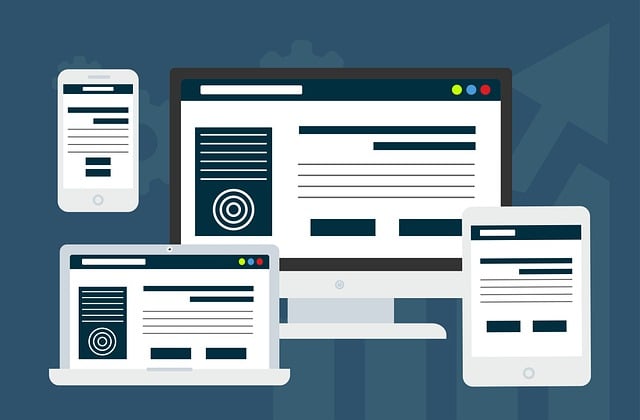
You’re getting good traffic to your landing pages, but there’s a problem. No or very low conversions! Visitors come to your site, look at the content, and then leave again. If this is happening frequently, your marketing return on investment decreases. If you’re not getting the conversion rate you want, one of these ten landing page mistakes may prevent conversions.
Why high conversion rate matter?
Online success depends on high conversion rates because they convert visitors into tangible outcomes. The percentage of visitors who become customers is as significant as the total number of visits. A strong conversion rate indicates a successful landing page and a high return on investment (ROI). Failure to optimize for conversion can undermine the core of digital marketing.
Landing page mistakes that can affect your conversion rate
1: Headline is Unclear
When someone visits your page, they initially see your headline. You risk losing their interest immediately if it doesn’t catch their attention or effectively communicate your value proposition. Create a headline that grabs the attention of your target market and makes it apparent what they stand to gain from using your good or service.
2: Broken Connections
Customers may click back arrows on broken links and never return, which can quickly result in lost business. Following a negative experience, 88% of internet users are less likely to revisit a website. Verify that downloads produce the anticipated outcome, form submissions are accurate, and all CTAs function.
3: Slow Loading Times
Slow load speeds are the most common landing page blunders, and for good reason. 53% will quit a website if it takes three seconds to load. It can also negatively affect your website’s Google rating, which makes it more difficult for potential clients to locate you online.
How, then, can you speed up your landing page? Pictures could be the problem. The most frequent causes of a slow website load time are a large number of images or an excessive number of images. Resizing and compressing photos to fit your landing page’s layout is always one technique to solve the problem.
4: Ineffective Headlines and Copy
Headlines are the first thing a user sees on a landing page, and they can increase or decrease engagement. Examine how important headlines are for grabbing readers’ attention and providing a conversion-friendly atmosphere.
The secret to successful conversions is persuasive writing, not just attention-grabbing headlines. Discover how to write text that speaks to your readers, encouraging them to take action and increasing conversion rates overall.
5: No Unique Selling Proposition (USP)
The most crucial selling point—the product, the promotion, or the distinctive data that sets the company apart—should be the center of attention on a landing page. The Unique Selling Proposition (USP) should explain this clearly and firmly so visitors can sign up. The USP is the main selling point, while the CTA guides the visitor’s attention toward the intended action. It’s crucial to distinguish between the two.
6: Security and Lack of Trust Indicators
Visitors want to know that their information is secure in this day of growing concerns about online security. Add security and trust indicators to your landing page to alleviate this worry. Examples are SSL certificates, security badges, privacy policy links, and related certifications or affiliations. These components support your audience’s development of trust and credibility.
7: The Risks of Excessive Creativity
It’s common to celebrate creativity as the engine of innovation and advancement. It enables us to think creatively, resolve challenging issues, and realize original concepts.
However, like many beautiful things, excessive creativity can have drawbacks. Lack of focus, confusion, and even inability to accomplish our goals can result from overusing or misusing creativity.
Overly imaginative ideas may be more difficult or abstract to execute or remove resources from tried-and-true successful tactics.
8: Inadequate Mobilization
It is impossible to exaggerate the significance of mobile optimization given the widespread use of mobile devices. Find out why mobile-responsive pages are a trend and essential for practical conversions in the current digital environment.
Examine practical methods to guarantee your landing page is mobile device optimized and accessible. Examine responsive design techniques that improve user engagement and increase conversion rates by accommodating the mobile user’s needs.
9: Insufficient Target and Segmentation
The demands of different visitors to your landing page could differ. Poor conversion rates may result from failing to customize your landing page for particular target populations. Make unique landing pages for each type of customer or advertising campaign. Tailor the content, pictures, and call to action to each audience’s interests and driving forces.
10: Ignoring the A/B test
Here’s where assumptions might backfire in the field of digital optimization. Learn how vital A/B testing is to optimizing the landing page so that choices can depend on user feedback rather than conjecture.
Use A/B testing to start a continuous improvement journey. Discover the intricacies of tailoring your landing page using data-driven insights to produce a dynamic, user-friendly experience that changes with time.
The Bottom Line
When you create a landing page that translates to sales, there are a few simple actions you can do to increase conversion rates considerably. Sift through your landing pages to ensure you avoid these expensive blunders and get the best return on investment from your digital marketing initiatives.